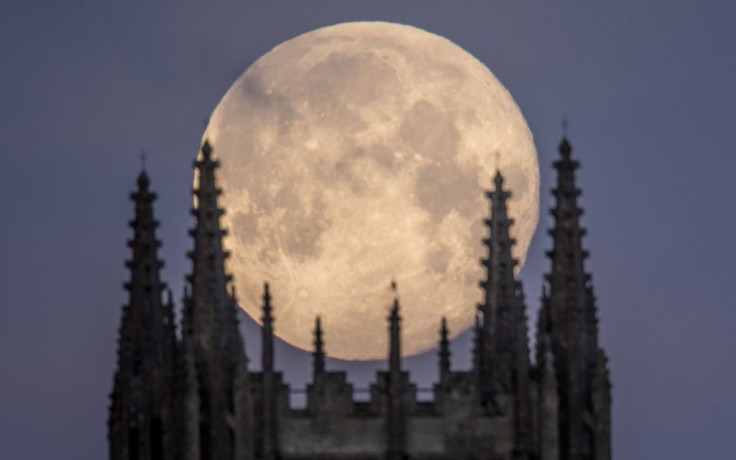Don't Miss This Week's Flower Moon, The Final Full Supermoon Of 2020
KEY POINTS
- May's Flower Moon is the last Full Moon supermoon of the year
- The Moon will appear full until Friday morning
- This year, there will also be New Moon supermoons, a "Blue Moon" and a micromoon
Don’t miss this week's Flower Moon -- it is the last full supermoon of the year. The rest of the year wil bring New Moon supermoons, a "Blue Moon" and, the smallest Full Moon of the year -- but you will have to wait till next year for another Flower Moon!
While this month's moon will turn full precisely on May 7 at 10:45 a.m. UTC (6:45 a.m. ET), it will appear full starting from Wednesday (May 6) evening until Friday (May 8) morning. This gives people about three days to watch the last full supermoon of the year as it shines in front of the constellation Libra.
Technically, each phase of the Moon lasts for just an instant but, for people on Earth, the Moon appears to remain at that phase for up to several days. This means that even though people won't exactly be looking at the full Moon, they can still enjoy watching the Moon as it appears bigger and brighter than the usual full moon.
Compared to other sky events, the supermoon can be more easily seen even without equipment especially since it will be brighter and bigger than the usual, albeit just slightly. However, the best way to watch the supermoon, or any full Moon, is during the moonrise or moonset because seeing it closer to the horizon will make it appear even bigger than it actually is.
Skywatchers can check when the Moon rises or sets in their location this week by consulting a moonrise/moonset calculator. In New York City, for instance, the May 7 moonset will happen at 6:06 a.m. while the moonrise is set for 8:27 p.m.
It could be chilly during those times, so be properly dressed for the weather. It is also good to use a telescope or binoculars to get an even closer view of the Moon and its craters.
Those who can’t watch the supermoon live can opt to watch it via live feeds, such as the one from the Virtual Telescope Project, which will livestream the supermoon over Rome starting at 6:30 p.m. UTC (2:30 p.m. ET) on May 7.

Following the definition of "supermoon" by astrologer Richard Nolle, which describes a supermoon as a New or Full Moon that occurs within 90% perigee, then there will still be supermoons this year but, they will be a series of New Moon supermoons. Unlike the Full Moon supermoons, however, they garner less attention because they are not observable from Earth. This year's New Moon supermoons will occur on Sept. 17, Oct. 16 and Nov. 15.
The opposite of a supermoon is a micromoon, which is when the full or new Moon is at its farthest distance from the Earth. In 2020, the smallest Moon of the year will happen on Oct. 31, in the very same month that will experience a "Blue Moon" or two full moons in one month - one on Oct. 1 and another on Oct. 31.
© Copyright IBTimes 2024. All rights reserved.






















